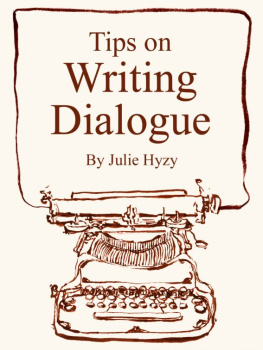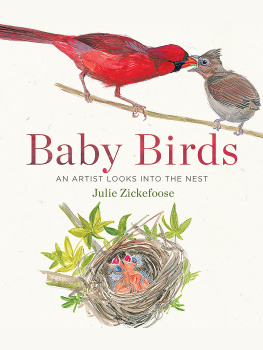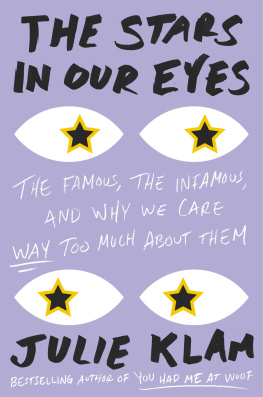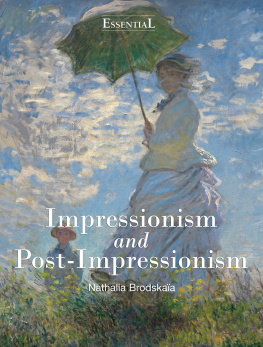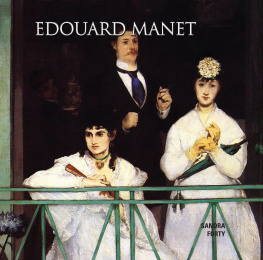An enchanting book ...
a delightful story with aptly chosen illustrations.
BOOK OF THE YEAR, Financial Times
Francophiles will dote on the lively diary of Julie Manet
which provides valuable insights into the lives of Degas,
Renoir and others in that charmed circle.
RICHARD EDMONDS, Birmingham Post
Often the most trivial details in Julies diary
are the most revealing.
RICHARD DORMENT, Daily Telegraph

Published in 2017 by
I.B.Tauris & Co. Ltd
London New York
www.ibtauris.com
Copyright of the English translation, notes and additional material 2017 Jane Roberts Copyright 2017 Yves and Franoise Rouart
The right of Jane Roberts to be identified as editor and translator of this work has been asserted by Jane Roberts in accordance with the Copyright, Designs and Patents Act 1988.
All rights reserved. Except for brief quotations in a review, this book, or any part thereof, may not be reproduced, stored in or introduced into a retrieval system, or transmitted, in any form or by any means, electronic, mechanical, photocopying, recording or otherwise, without the prior written permission of the publisher.
Every attempt has been made to gain permission for the use of the images in this book. Any omissions will be rectified in future editions.
ISBN 978 1 78453 924 5
eISBN 978 1 78672 192 1
ePDF 978 1 78673 192 0
A full CIP record for this book is available from the British Library
A full CIP record is available from the Library of Congress
Library of Congress Catalog Card Number: available
Designed and typeset in 12 on 14 Perpetua
by illuminati, Grosmont
Printed and bound in Great Britain
by TJ International Ltd, Padstow, Cornwall
Contents
Acknowledgements
I first met Clment Rouart, Julies second son, in 1978 through an American acquaintance who had promised to introduce me to a friend who had a lot of paintings. As a somewhat blas young expert at Sothebys at the time, I thought I had seen just about everything there was to see in the art world, so entering the ground-floor sitting room of 40 rue Paul Valry was like suddenly breaking into Ali Babas cave: the Monet, Manet, Renoir, Delacroix and, of course, the Berthe Morisot works around me were simply mind-blowing. Clment Rouart had always been keen for his mothers diary to be published, but it wasnt until ten years later that we published a first version of the edited text in English, which has long since been out of print. This is a totally new translation of the original, much longer text with extensive notes.
For their help and encouragement, I would like to thank Julies family and friends, in particular Yves Rouart, Franoise Rouart, Jean-Marie Rouart and Marc Rauffet.
I also wish to express my heartfelt gratitude to the following: Martin Dieterle, Flavie Durand-Ruel, Michel Gierzod, Eric Gillis, Nomie Goldman, Claire Gooden, Claire Lebeau, Henri Loyrette, Marianne Mathieu, Nelly Matras, Samuel Perkins, Sylvain Rousseau, Arlette Srullaz and Willem Russell.
Lastly, I would like to especially thank my assistant, Muriel Molines, without whose help it would have been impossible to produce this book.

A sightly self-conscious but very charming Julie aged 16
in her favourite summer outfit
Julie Manets Impressionist Childhood
To record ones thoughts every day is an excellent idea; nothing forms ones style more effectively. And by this I mean not the habit of turning out fine phrases but of putting ones thoughts into words. It even seems to me that we ought to be very lenient, to condone lack of correctness, provided that the feeling is real and that the ideas are personal, were the painter Berthe Morisots somewhat prophetic comments in 1884 to her sister Edma, who had sent her the diary of her eldest daughter to read.
Many young girls still confide their inner thoughts to diaries, and it is hardly surprising that, with her mother giving all her encouragement, Berthe Morisots only daughter, Julie, would prove to be no exception to the rule. Indeed, we hear that Julie, at the age of 10, is writing her memoirs as well as learning to play the mandolin.and precocious eyes of the youngest member of what was surely the most prominent artistic family of the time.
Julie Manet was born in Paris on 14 November 1878 into a wealthy and cultured milieu at the height of the Impressionist era. In many ways, she had a very conventional childhood, loved and cherished by adoring and artistic parents and relatives. Her diary recounts cloudless summers with countless trips to interesting places and Parisian winters crammed with concerts and exhibitions. But this was no ordinary bourgeois family or circle of friends: her sailing trips were with the poet Mallarm, her picnics with the painter Renoir, and her visits to the Louvre with Degas. As the diary closes, the poet Paul Valry courts and later marries her first cousin, Jeannie.
Julie was the only child of the painter Berthe Morisot and her husband Eugne Manet, the younger brother of douard Manet, the most controversial artist of the day. By the time she began her Journal the Impressionists were well known, if not always highly respected, middle-aged, and already going their different ways artistically. They remained, however, surprisingly close and friendly to each other and provided her with a loving and supportive circle when she was left an orphan in 1895.
Berthe Morisot, born in 1841, was an experienced and serious painter by the time she married in 1874, only a few months after she had exhibited four paintings, two pastels and three watercolours in the first Impressionist exhibition held at the photographer Nadars studio in the boulevard des Capucines. Berthe had always been encouraged by her family to paint, but what had begun as a required and ladylike pastime had become a serious career. While her two sisters, Yves and Edma, had given up painting when they married, for Berthe things were very different: Do you realize what this means? Guichard, Berthes art teacher, wrote to Madame Morisot, when he realized that her daughter wanted to become a professional artist. In your
In 1868, at one of her frequent visits to the Louvre, Berthe Morisot was introduced to douard Manet by the painter Henri Fantin-Latour. Their attraction to each other was spontaneous, immediate and long-lasting: Manet soon felt a frustrated amiti amoureuse for this beautiful and serious young woman as well as sincere admiration for her obvious talent. For the very Catholic Berthe, we suspect a much more cautious relationship was in order because Manet was not only a married man but also had a wholly deserved reputation as a philanderer. Berthe willingly served as his model in 1869 for Le Balcon painted in 1872, which she bought when it came up at the Duret sale in March 1894.
Berthe Morisot never actually worked with Manet: his only pupil, as such, was Eva Gonzals. Berthe had been impressed by Monet and Degas, whom she had met at her mothers famous Thursday evening soires, and she exhibited at all the Impressionist shows thereafter.
douard Manet wrote in jest to Fantin-Latour on 26 August 1868,
I totally agree with you The Misses Morisot are delightful; its just a pity that they dont happen to be men. However, I suppose they could, as women, serve the cause of Painting by marrying Academicians and give the Old Buffers a shock. Come to think of it, that might be asking a bit much of them!

Next page

